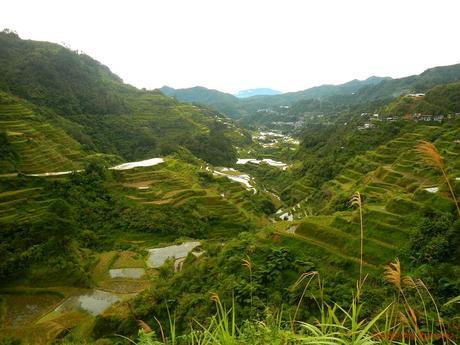
Human beings are incredibly talented creatures. Within each of us is an immense cache of imagination, creativity, determination, and talent. When humans make use of their ingenuity and skill, they create indescribably astounding wonders that captivate the imagination and awe of the world. And as Filipinos, we are proud and honored to have one of those wonders-the mighty and internationally recognized Banaue Rice Terraces.
The Banaue Rice Terraces is a testament to the Ifugao people's skills and oneness with the mountain. Unofficially dubbed as the Eight Wonder of the World, these gigantic and expansive terraces are over 2,000 years old and have supplied rice to Filipinos to this very day. They were built by blanketing the mountain's slopes with mud and rock, forming the characteristic stair-like formation that is designed to draw water from irrigation canals above the terraces.
The Banaue Rice Terraces are man-made proofs of the Ifugao people's unmatched knowledge of earthwork, stonework, and water irrigation. Naturally, we want to pay homage to these incredible architects of Mother Nature by visiting the terraces on our way to Sagada.
We got to the airport early. After checking in, we saw a Bo's Coffee outlet right at the departure area. Since we have our Origins Travel Journal with us, we decided to use one of the coupons in the journal try out their Sagada coffee, a perfect warm-up for the trip. The coffee was great-sweet, nutty, with a hint of fresh tobacco.
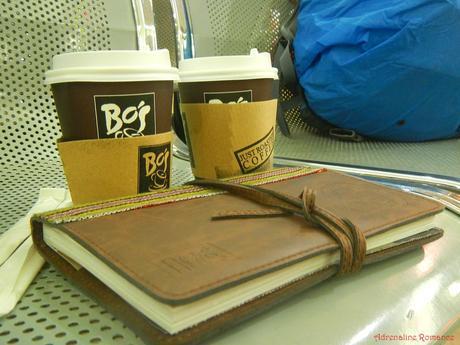
After arriving in Manila, we went to the Mall of Asia to have dinner a heavy dinner and meet up with our fellow travelers and friends. After dinner, we went to the parking lot and met up with our tour operator's driver who whisked us away to our "jump-off" where two other groups were waiting.
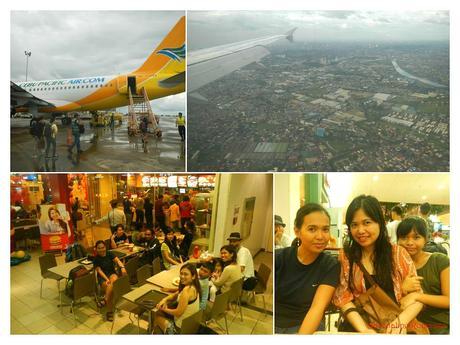
We departed Manila half past 8 PM. We already knew that it was going to be a long ride to Sagada, so we decided to doze off. At around 3 AM, we woke up from a fitful, uncomfortable sleep, we arrived at this rest stop in Nueva Vizcaya, which means we were already more than 250 kilometers from the capital city. We went out of the van to stretch our legs and ordered a hot drink to stave off the early dawn chill.

Oh, I didn't know that Sweetie is selling some pasalubong! Hehehe!
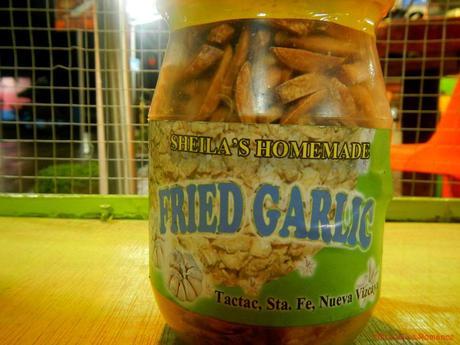
After half an hour, we were on the road again and tried to get some shut-eye. When we woke up, it was already close to 6 AM, and the sun was starting to light up the land. We stopped in the town of Solano, the province's central business district, to have breakfast.
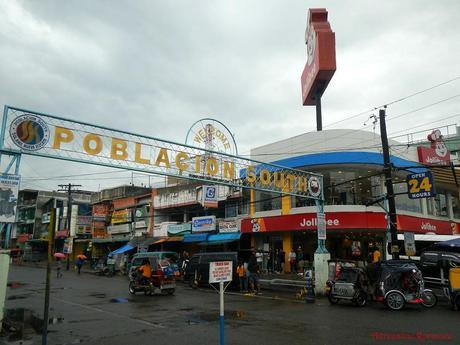
Re-energized by the breakfast despite a persistent pain in the lower back due to hours of sitting down, we continued our road trip. With daylight pouring in every minute, we finally saw a glimpse of the tree-laden highway. Just check out those verdant trees!
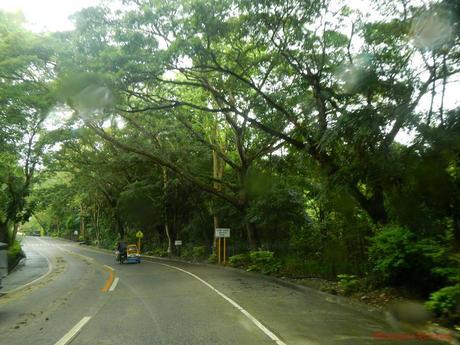
After two hours of traveling, we stopped by the municipality of Lagawe to refuel. That meant that we have already entered the province of Ifugao. That also means that we were nearing our first destination of this adventure after 12 hours on the road.
We love far-flung towns and provinces like these because where we can witness and experience simple living. The drone of motorcycles, the laughter of young students, and the tolling of church bells all add to a wonderful, nostalgic cacophony.
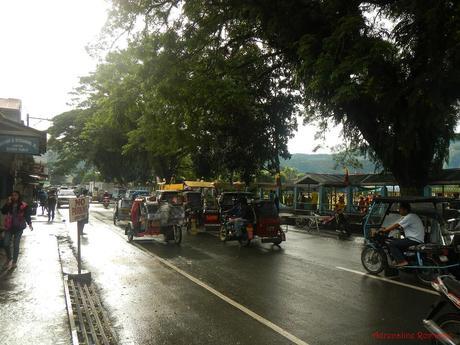
With all the vans' gas tanks filled up, it was time to move on. After half an hour, we started to ascend a gently inclined mountain. Edzel turned off the air conditioner and told us to open our windows to breathe in the fresh, cool, forest-scented air of the landlocked province of Ifugao.
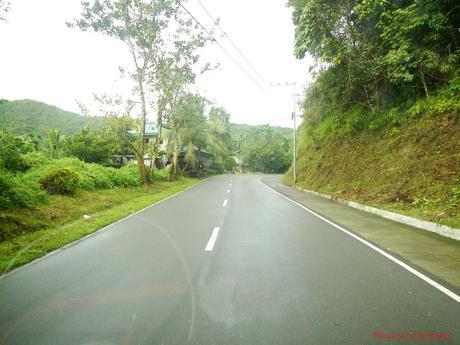
Along the way, one of the vans showed signs of overheating due to the gentle but consistent ascent. Thus, we stopped by the road to give the engine a break.
Every now and then, we see intricately manicured mini-parks like these on the road. They serve as rest stops where one can have a break after several hours of driving. This one in O-ong has a small waterfall at the center of the park.
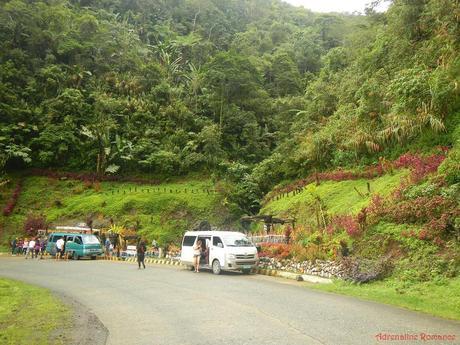
Let's go inside, shall we? This pretty flower garden is managed by the LGU and maintained by locals. That small hut is an outhouse where travelers can relieve themselves to answer the call of Nature. There are gravel pathways that take you around the small park.
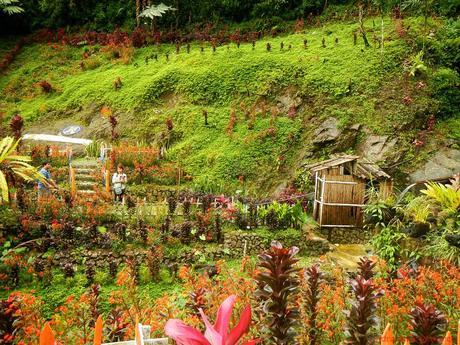
The O-ong stop is also where travelers can refill their water bottles with fresh, cool spring water straight from the mountain. The presence of water pipes indicates that this place is also a major water source for the community.
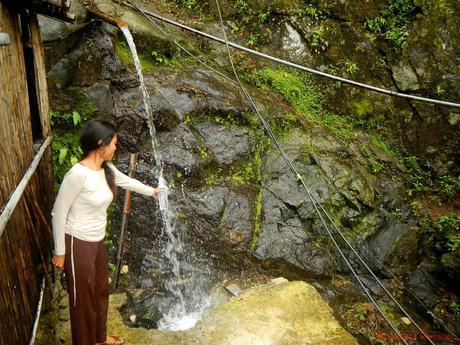
Across the O-ong roadside park, we were treated to this magnificent landscape. Seeing this lush and magnificent forest makes it hard to believe that the Philippines has only 26 percent of forest cover left, according to the Trading Economics. With our forests dwindling, we face a catastrophic extinction rate of 20 percent.
It is absolutely imperative that we should reverse this trend because, according to Conservation International, our country is one of the very few biological hotspot and megadiversity countries in the world.
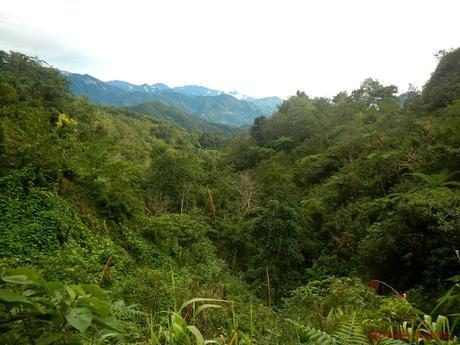
After almost another hour on the road, we entered Banaue, a fourth-class municipality in the Ifugao province. Seeing the sign made us whoop in delight; we're at the foot of our first destination. Check out the gardened roadside.
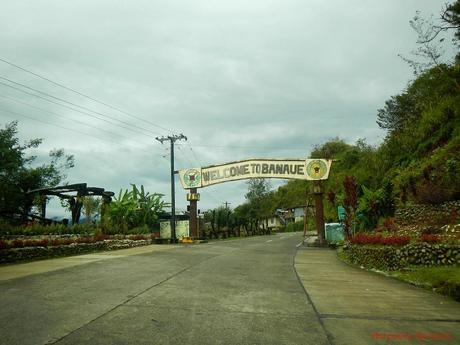
From the road, we could see the start of the famed rice terraces. As you can see, contemporary human development has started to encroach this ancient man-made marvel.
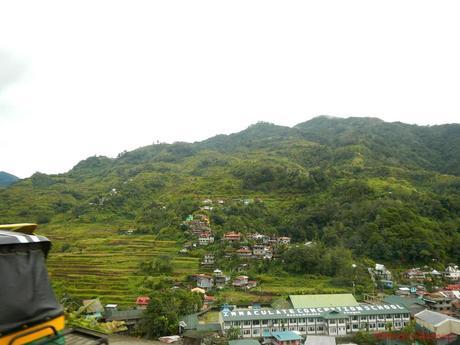
As we went farther, the immensity of the terraces slowly began to reveal its verdant beauty. Those terraces may look small in the photo, but they are actually massive!
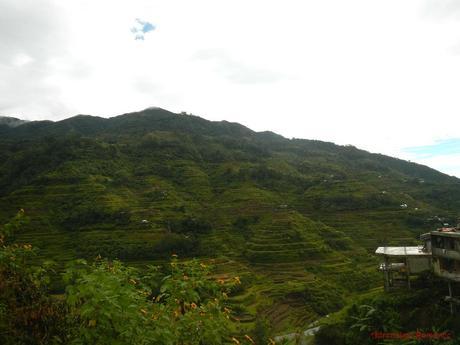
We stopped at the Oyanarra Viewpoint, the highest viewing deck in the town. At last, we can stretch and move our cramped, stiff legs.
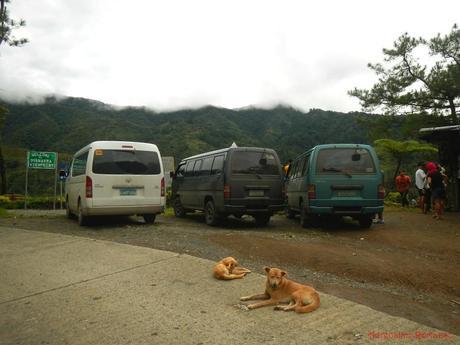
Markers at the Oyannara viewpoint tell visitors a bit about the Banaue Rice Terraces, which is an International Historic Civil Engineering Landmark and a Greenpeace GMO-Free World Heritage Site.

Intricate woodcarving is still very much alive in Ifugao as it has in the ancient times. This lady is applying varnish to a tray made of carved wood.
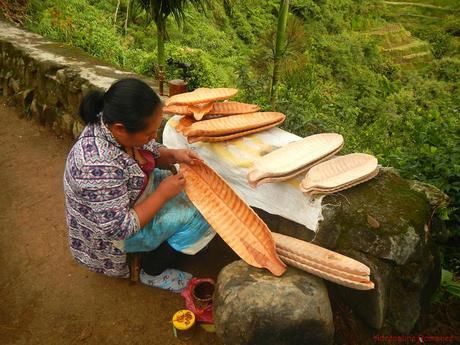
There are a few souvenir shops at the viewpoint where one can purchase nice souvenirs. Please do get some; virtually all decorations, purses, scarves, headgear, and more are 100 percent handmade. They proudly showcase artistry, creativity, and skill of the Ifugaos.
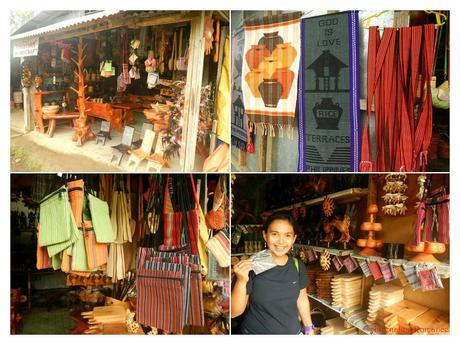
Ladies and gentlemen, this is Ifugao's amazing Banaue Rice Terraces. They begin at the base of the Cordillera mountain range and extend upwards to more than 1,500 feet above. It has been said that if all the terraces in the region are placed end to end, they would encircle the globe! Whether this is true or not may never be empirically addressed, but it's still amazing.
The Banaue Rice terraces are thousands of years old and are spectacles of the Ifugaos' ingenuity. Take note that these massive terraces were carved using primitive farming and land-moving equipment, mostly by hand.
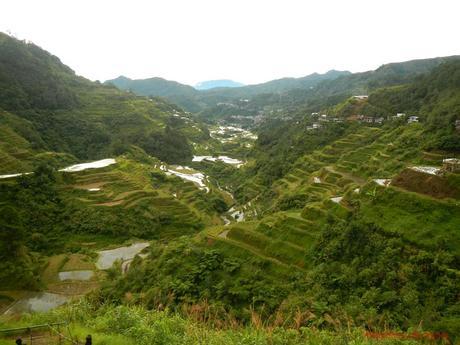
Check out our simple video of this amazing man-made marvel:
The Banaue Rice Terraces is considered as one of the Globally Important Agricultural Heritage Sites (GIAHS) in the world. These terraces altogether create unique groups of microwatersheds that collectively form an important part of the mountain's ecology. Not only do the terraces form platforms for planting rice but they also act as a rainwater filtration system.
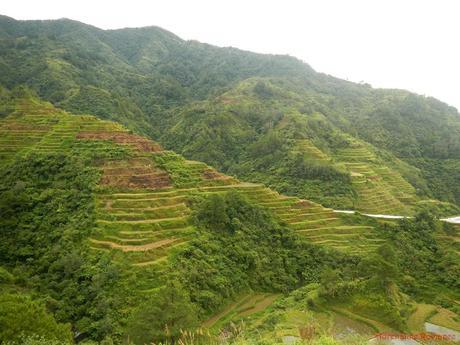
Notice that the mountaintops above the rice terraces are still heavily forested. Same goes true at the sides of several of the terraces. The practice of planting and preserving these private forests is called muyong, and these immense canopies are still managed by Ifugao tribes to this very day. These forests are home to more than 260 species of indigenous flora, most of which are endemic to the place.
These lofty forests combined with the terrace's architecture and the Ifugao's proven farming methods all form an extremely efficient biorhythm in which cultural activities sync harmoniously with the natural rhythm of the mountain and climate. All together, this biorhythm allowed farmers to grow rice at more than 1,000 meters above sea level, an altitude wherein rice can't normally survive.
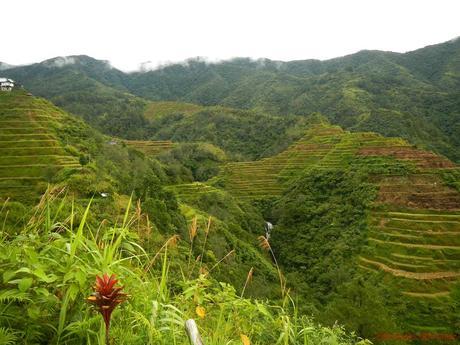
The new Philippine twenty peso bill designates the Banaue Rice Terraces as a UNESCO World Heritage Site. Take note that this is actually erroneous thanks to the faulty research of the concerned government agency creating these bills. UNESCO didn't include the Banaue Rice Teraces under the inscription Rice Terraces of the Philippine Cordilleras because of the presence of many modern structures such as those houses and buildings above the terraces. It has a low score in UNESCO's integrity criterion.
The rice terraces of Batad, Hungduan, Bangaan, Mayoyao, and Nagacadan are the ones designated as UNESCO as World Heritage Sites. These clusters are all in Banaue but are not designated as the Banaue Rice Terraces.
Nevertheless, the Banaue Rice Terraces were declared as a National Cultural Treasure by virtue of Presidential Decree 260 in 1973 by our government.
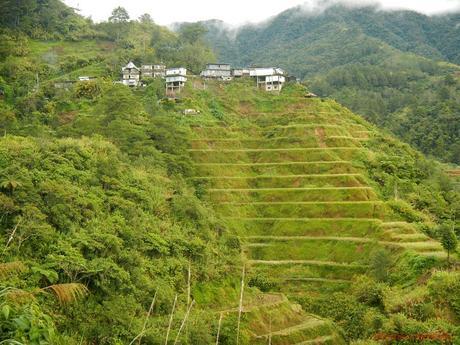
The Banaue rice terraces and its neighboring terraces are fed by a massive and intricate irrigation system fueled by springs, waterfalls, and other water sources in the rainforests above the mountains. This waterfall is one of those sources.
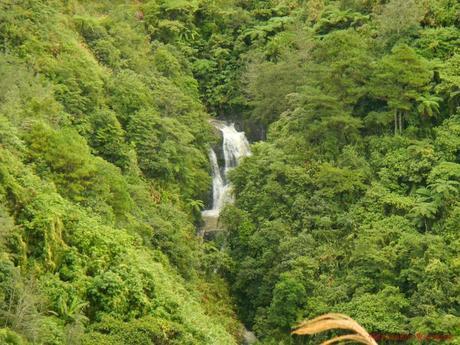
Locals still plant rice and vegetables on the terraces much like their ancestors did. However, a large percentage of today's Ifugaos prefer the more profitable tourism and hospitality industry that has sprung up from the Banaue Rice terraces.
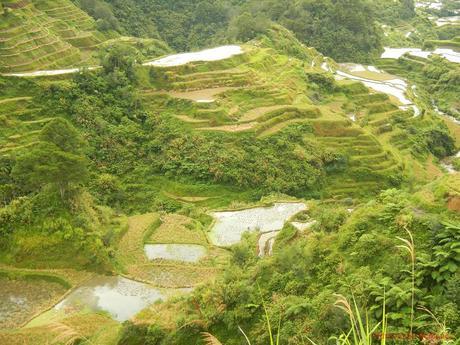
The rice terraces need constant reconstruction and maintenance, but with fewer farmers, many of the steps have fallen into disuse and erosion. These terraces are severely eroded, and without intervention, the mountain would reclaim it as her own after a few years.
To give you an idea of just how huge these terraces are, check out the people on top of one of the steps.
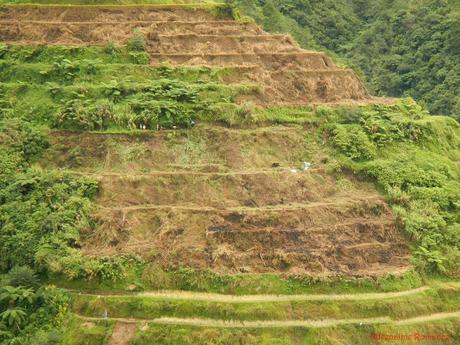
A few meters below street level is a nice viewing deck where one can have a great view of the Banaue Rice terraces and the mountains that surround them. Those huts are reconstructions of traditional, indigenous Ifugao houses.
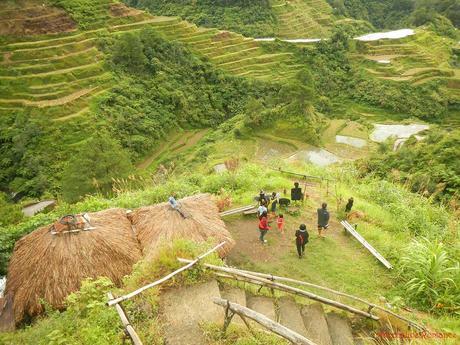
Carved wooden sculptures of rice anitos, or guardian spirits, stand watch over the prized terraces.
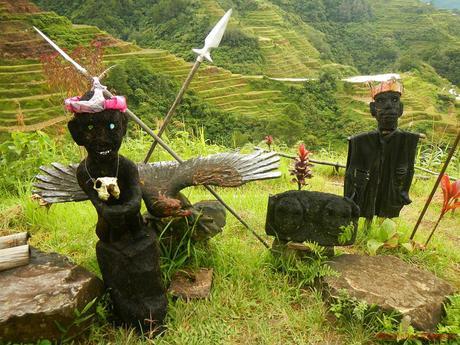
We met this elderly Ifugao man wearing traditional, weaved headdress, scarf, and wanno (g-string). He provided us a history and cultural lesson about the Ifugaos. From him, we knew the workings of the terraces, the ancient legal system of the region, the treasured values of the Ifugao, and more. He allowed us a glimpse into the Ifugao's culture, which is largely untouched by Spanish colonialism.
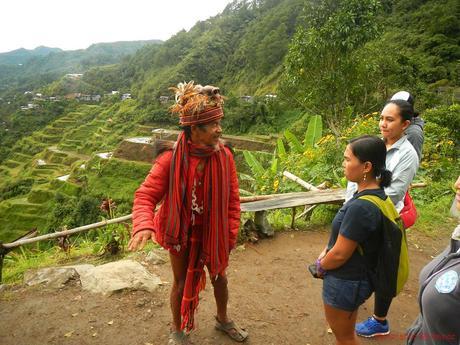
The shaman and the lady warrior! Hehehe! Check out that beautiful, colorful textile the man is wearing; his scarf, wanno, and headdress are all made from clothing that is woven by hand on looms.
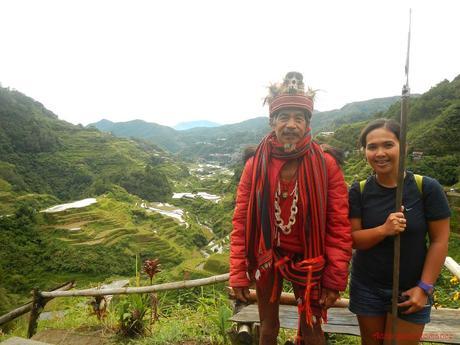
We tried out some of the accessories and found out that their textiles are actually warm, perfect for warding off the mountain chill. That thatched vest that Sweetie is wearing is actually an indigenous backpack (that's actually the back of the pack, but the elderly dude said that she could wear it the other way around because it looks nice. Hehehe!). Locals use the backpack to stuff harvested rice.
The Banaue Rice terraces has influenced much of the Ifugaos. For that, their culture revolves around rice, which is considered a prestige crop. It is not surprising, therefore, that Ifugaos have numerous dishes (gotta try them someday), festivals, taboos, and agricultural rites that center around rice.
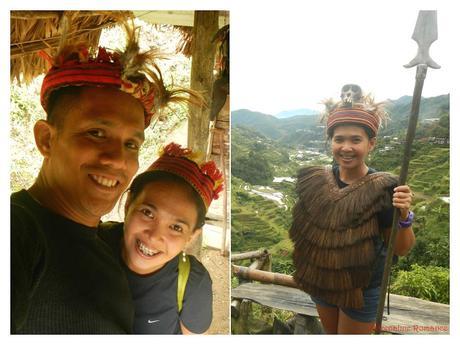
Thank you very much, fellow travelers and friends, who joined us in this trip. Our adventure has just begun!
Tips to follow
